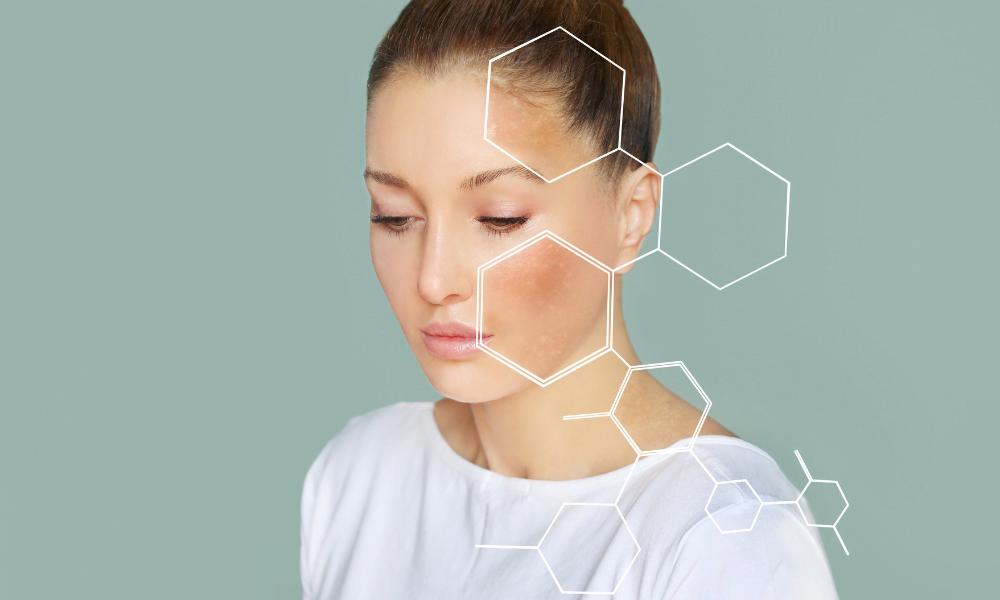Hyperpigmentation is a common skin condition characterized by patches of skin that appear darker than the surrounding areas. It occurs when there is an overproduction of melanin, the pigment responsible for skin color. While hyperpigmentation is typically harmless, it can affect one’s self-confidence and desire for even-toned skin. In this blog, we will delve into the causes, types, and effective treatment options for hyperpigmentation.

Causes of Hyperpigmentation
Sun Exposure: Ultraviolet (UV) rays from the sun trigger the production of melanin, leading to sunspots or solar lentigines.
Hormonal Factors
Hormonal changes during pregnancy (melasma or “the mask of pregnancy”) or due to hormonal therapies can cause dark patches on the skin.

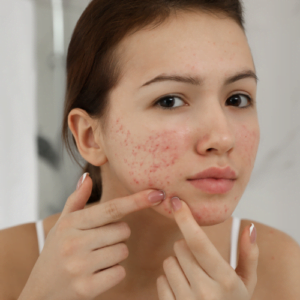
Post-Inflammatory Hyperpigmentation (PIH)
PIH occurs as a result of skin inflammation, such as acne, eczema, or a wound. When the skin heals, it may leave behind areas of increased pigmentation.
Age and Genetics
The natural aging process and genetic predisposition can contribute to the development of hyperpigmentation.

Types of Hyperpigmentation

Melasma
Commonly seen on the face, melasma appears as dark patches and is often triggered by hormonal changes, such as pregnancy or birth control pill usage.
Sunspots


Post-Inflammatory Hyperpigmentation (PIH)
This type of hyperpigmentation occurs after skin inflammation, such as acne breakouts, burns, or cuts. It can affect people with various skin tones.
Effective Treatment Options
Sun Protection
Sunscreen is essential in preventing and managing hyperpigmentation. Apply a broad-spectrum sunscreen with an SPF of 30 or higher daily, even on cloudy days. Reapply every two hours and wear protective clothing and a wide-brimmed hat when outdoors.

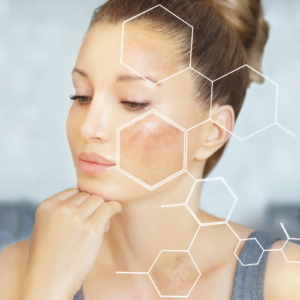
Topical Treatments
Several topical treatments can help fade hyperpigmentation. Look for products containing ingredients like hydroquinone, retinoids, kojic acid, azelaic acid, vitamin C, niacinamide, or licorice extract. These ingredients can help lighten dark spots and even out the skin tone. Always follow the instructions and consult a dermatologist for personalized recommendations.
Chemical Peels
Chemical peels involve applying a chemical solution to the skin to remove the outer layer, revealing smoother, more even-toned skin. Peels containing alpha-hydroxy acids (AHAs), such as glycolic acid, or beta-hydroxy acids (BHAs), like salicylic acid, can effectively treat hyperpigmentation.

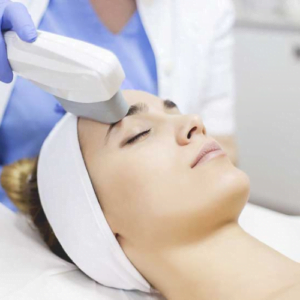
Laser and Intense Pulsed Light (IPL) Therapy
These treatments use concentrated light energy to target and break down excess melanin in the skin. They are effective for treating various types of hyperpigmentation but may require multiple sessions and professional supervision.
Microneedling
This procedure involves creating tiny punctures in the skin to stimulate collagen production and enhance the penetration of topical treatments. Microneedling can help improve the appearance of hyperpigmentation when combined with appropriate serums or creams.
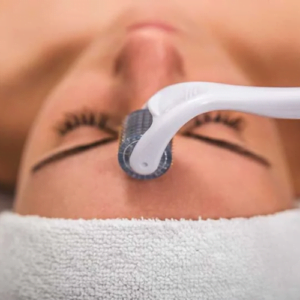
Conclusion
Hyperpigmentation can be a distressing skin condition, but with the right understanding and treatment, it is manageable. Protecting your skin from the sun, using topical treatments, considering professional procedures like chemical peels or laser therapy, and maintaining a consistent skincare routine can significantly improve the appearance of hyperpigmentation. Remember to consult with a dermatologist to determine the best course of action for your specific skin concerns. With patience and persistence, you can achieve a more even-toned, radiant complexion and regain your confidence.

